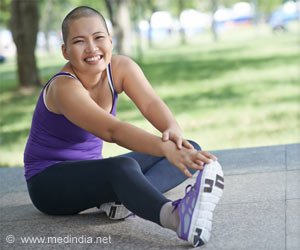The discovery of new fossil material that was found in Patagonia has shed light on the evolution of dinosaurs in the Jurassic age.

They were the dominant predators in the Southern hemisphere and resembled the tyrannosaurids in their general appearance, but their unusually short and high skulls were unique.
This characteristic form suggests that the animals could muster an extremely powerful bite.
In one respect, however, their northern counterparts could claim to be better equipped. Though they were pretty stubby, the arms of Tyrannosaurus rex were much more impressive than the puny forelimbs of the abelisaurids.
LMU paleontologist Dr. Oliver Rauhut, who is also affiliated with the Bavarian State Collections for Palaeontology and Geology in Munich and his Argentinian colleague Dr. Diego Pol have now discovered when the trend toward reduction of the upper extremities began in the abelisaurids.
"Abelisaurids were a highly diverse and widely distributed group during the Cretaceous," said Rauhut, "but their origins have so far remained enigmatic."
Advertisement
Rauhut and Pol have named the new species Eoabelisaurus mefi, or "dawn Abelisaurus of the Museo Palentologico Egidio Feruglio (MEF)", in recognition of the Museum's support for their research collaboration.
Advertisement
"The reason why so little is known about it is that the fossil record of predatory dinosaurs in the Southern hemisphere is very incomplete, especially for the period from the Middle Jurassic to the Early Cretaceous," he explained.
The researchers were also surprised to find that Eoabelisaurus had evolved on the supercontinent Pangea before it fragmented into the landmasses we know today, and yet abelisaurids were not distributed globally.
"One possible explanation is that a huge desert in Central Pangea prevented dispersal of the group to the North, confining the evolution of the lineage to the Southern hemisphere," said Pol.
Recent geological studies, together with the results of climate modeling, support the existence of such a geographical barrier.
How did the shortening of the forelimbs proceed?
"The trend apparently set in early on, and began at the distal end," says Rauhut.
In Eoabelisaurus, the upper arm is of normal size, but the lower arm is much shorter in comparison; the hand is very stunted and the fingers and claws are tiny."
US paleontologists had recently suggested that reduction in abelisaurids began with the hand, and the new data seem to confirm this.
Source-ANI









